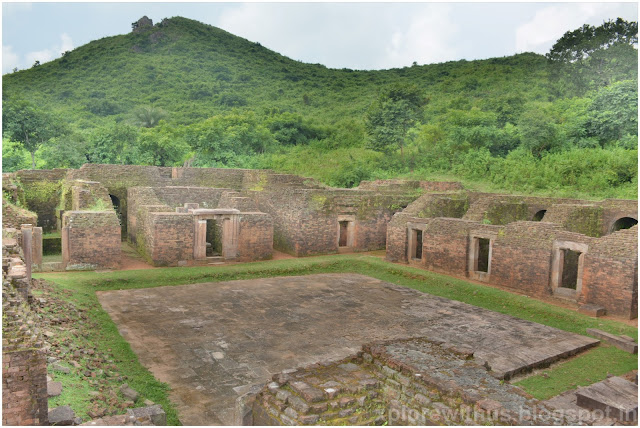Date: 27th Sep 2017
Visitors: Arun, Shilpi and Harsh
Fee: None.
Timing: 9 AM to 5 PM.
Distance: 1525 Kms one way.
Parking: Roadside.
Food: Not Available.
Photography: Allowed.
Other attractions nearby: Ratnagiri and Lalitgiri.
Udayagiri is located around 90 Kms from Bhubaneshwar. The place is the largest Buddhist site in Odisha. Udayagiri along with Ratnagiri and Lalitgiri is called diamond triangle of Odisha. We reached the place around 9 AM and no one was around. The sites were far inside from the main gate and no directions were given. Luckily after some time the caretaker of the museum arrived and showed us around the place. The archaeological survey of India excavated these stupas, monasteries, statues and other monuments starting from 1958. There are four sites found of which three are at the bottom of the hill and one up.
The statues unearthed from the sites have been placed in a small museum.
The main brick stupa with the images of Buddha.
The statue of Buddha in the brick Stupa.
The beautifully carved entrance a room with statue of Buddha.
Udayagiri was called Madhavapura Mahavira in ancient times. The site dates back between 7th and 12th century AD.
The brick monastery.
The second monastery with stupas and statues of Buddha.
The shrine complex.
The sites are scattered and needs a good amount of walking.
Stone stepped well.
We were here.
The biggest Buddhist complex with the lush green mountain in the backdrop is an amazing place to visit.
Visitors: Arun, Shilpi and Harsh
Fee: None.
Timing: 9 AM to 5 PM.
Distance: 1525 Kms one way.
Parking: Roadside.
Food: Not Available.
Photography: Allowed.
Other attractions nearby: Ratnagiri and Lalitgiri.
Udayagiri is located around 90 Kms from Bhubaneshwar. The place is the largest Buddhist site in Odisha. Udayagiri along with Ratnagiri and Lalitgiri is called diamond triangle of Odisha. We reached the place around 9 AM and no one was around. The sites were far inside from the main gate and no directions were given. Luckily after some time the caretaker of the museum arrived and showed us around the place. The archaeological survey of India excavated these stupas, monasteries, statues and other monuments starting from 1958. There are four sites found of which three are at the bottom of the hill and one up.
The statues unearthed from the sites have been placed in a small museum.
The main brick stupa with the images of Buddha.
The statue of Buddha in the brick Stupa.
The beautifully carved entrance a room with statue of Buddha.
Udayagiri was called Madhavapura Mahavira in ancient times. The site dates back between 7th and 12th century AD.
The brick monastery.
The second monastery with stupas and statues of Buddha.
The shrine complex.
The sites are scattered and needs a good amount of walking.

Stone stepped well.
We were here.
The biggest Buddhist complex with the lush green mountain in the backdrop is an amazing place to visit.
















































